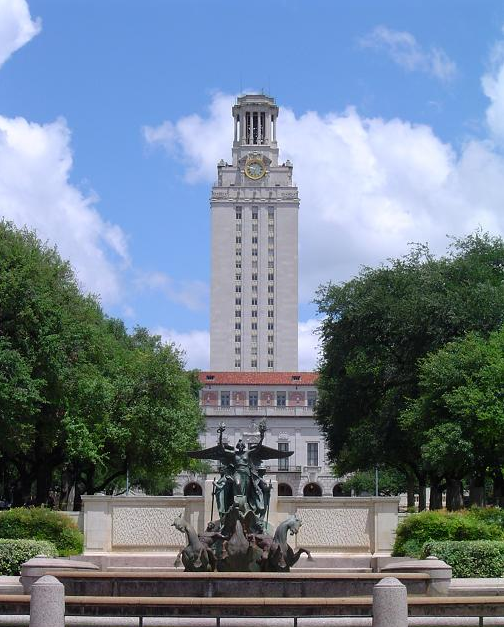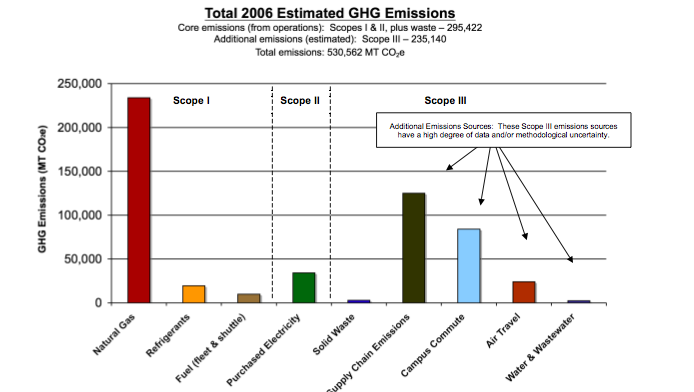 Over the past several months, researchers at the Good Company have been compiling a report to measure our own University of Texas’ emissions. Last week the results were announced…. We’ve got big feet.
Over the past several months, researchers at the Good Company have been compiling a report to measure our own University of Texas’ emissions. Last week the results were announced…. We’ve got big feet.
Thereport showed that UT’s total carbon emissions were a 292,434 metric tons of carbon dioxide equivalent in 2006. Emissions sources not required by the traditional registries are estimated to be an additional 238,237 metric tons. The vast majority of these emissions were from natural gas consumption, which totaled 233,839 metric tons of CO2.
The release of this information is an important step to be accountable for our greenhouse gas emissions. Says Assistant Director of the Campus Environmental Center and Public Citizen’s own, Druscilla Tigner:
It was exciting! This was a fantastic opportunity for the University of Texas to really stare its problems in the face, and pinpoint exactly what they need to do to reduce its impact on the environment. It’s a concrete jumping point for the campus sustainability movement.
 For me, one of the most interesting aspects of the report was a measure of the green house gasses emitted by a typical UT student to determine the per student carbon footprint. The report offered two general categories of students.
For me, one of the most interesting aspects of the report was a measure of the green house gasses emitted by a typical UT student to determine the per student carbon footprint. The report offered two general categories of students.
Student A, a low GHG emitter, has the following lifestyle:
This person lives close to campus, allowing them to primarily travel by foot or bicycle with occasional use of public transportation for longer distance trips or inclement weather. Not a native Texan, the student takes one flight home per year during the holidays to visit family. Student A lives in a two-bedroom, 1,200-square-foot apartment with three roommates. Her diet consists of mainly grains, vegetables and fruit (with some eggs, dairy and seafood), and she eats out two times per week. This person is a frugal consumer and the things she does buy are mostly used. Services she spends money on include education, university healthcare, regular dental care, Internet and phone service and entertainment.
Student B, on the other hand, is a high GHG emitter. Her lifestyle:
This person lives 10 miles from campus and commutes alone each day in an automobile, which gets 14 miles per gallon. This student is from Austin, so she does not need to fly home, but she does take two vacations by plane every year. Student B lives alone in a one-bedroom 900-square-foot apartment. Her diet includes meat and she enjoys eating out regularly. This person is a recreational shopper and generally indulges in the latest fashions and technologies. Services she spends money on include education, university healthcare, regular dental care, Internet and phone service and entertainment.
The difference? 26 metric tons of carbon dioxide. Seriously. Student A’s lifestyle emits approximately 15 metric tons of carbon dioxide per year, while Student B is responsible for a shocking 41 metric tons per year, which is the equivalent of burning 4,650 gallons of gasoline. Yikes! The majority of this difference is attributable to transportation. Maybe UT shouldn’t invest in more student parking after all.
However, the report also gave recommendations for decreasing emissions, and included the cost to implement these recommendations and then the estimated cost savings. Joshua Skov from the Good Company reminded us that being environmentally sustainable can save money. He says,
One-third of the global greenhouse-gas costs are negative in that they save energy and cost less. The first third of the job will save you money, and that is the best reason to get started.


